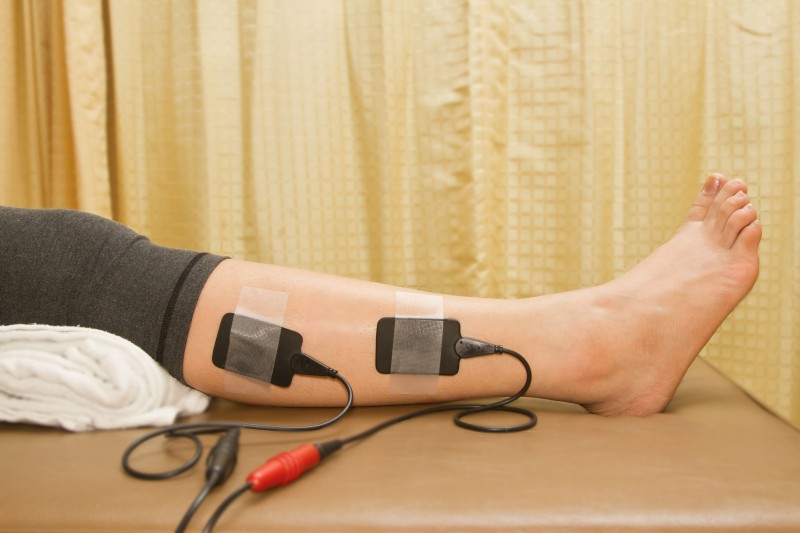Foot pain is one of the most ignored health issues among adults, yet it’s also one of the most common. According to the American Podiatric Medical Association, 3 out of 4 people experience serious foot problems at some point in their lives. However, only a small fraction of those individuals ever see a podiatrist for proper diagnosis and treatment.
Your feet are the foundation of your entire body. They support your posture, balance, and movement every single day—whether you’re walking the dog, chasing after kids, or standing for long hours at work. Ignoring symptoms now can lead to significant complications later. If you’ve been wondering whether to book a podiatrist appointment, this guide will help you make an informed decision.
Warning Signs That Require a Podiatrist
Let’s start with the most important question: when should you see a podiatrist? If you notice any of the following, don’t wait:
1. Ongoing Foot or Ankle Pain
Pain that persists for more than a few days or keeps coming back is not normal. It could indicate structural issues, joint inflammation, nerve compression, or injury. A podiatrist for foot pain can provide an accurate diagnosis and tailor treatment to your specific needs.
2. Heel Pain First Thing in the Morning
A sharp stabbing pain in the heel, especially when getting out of bed, often points to plantar fasciitis—a condition caused by inflammation in the ligament connecting your heel to your toes. Early treatment from a podiatrist for heel pain can include stretches, orthotics, night splints, or other non-surgical solutions.
3. Sports-Related Foot and Ankle Injuries
Athletes of all skill levels are prone to foot and ankle injuries like stress fractures, Achilles tendonitis, and sprains. A podiatrist for sports injuries can not only help you recover faster but also prevent future damage by improving biomechanics and recommending footwear or activity modifications.
4. Diabetic Foot Concerns
Diabetics are at high risk for foot complications due to poor circulation and nerve damage (neuropathy). Even minor injuries can turn into infections or ulcers without proper care. A podiatrist for diabetic foot care plays a critical role in prevention, routine monitoring, and wound care.
5. Changes in Nail or Skin Appearance
Unusual nail discoloration, thickened toenails, persistent dry skin, or redness can indicate infections, fungal problems, or circulation issues. Seeing a professional for a podiatrist consultation ensures these symptoms are caught early before they escalate into serious conditions.
What to Expect During Your Podiatrist Appointment
If it’s your first time visiting a podiatrist, you might feel unsure about the process. Here’s what typically happens:
- Health history review: Your podiatrist will ask about any medical conditions, medications, and symptoms.
- Physical exam: They’ll check your feet and ankles for signs of swelling, deformities, or skin changes.
- Gait analysis: You may be asked to walk so they can assess your balance, stride, and pressure points.
- Imaging tests: X-rays, ultrasounds, or MRIs might be used to examine bones, ligaments, or soft tissues.
- Personalized plan: Depending on the diagnosis, your plan might include stretches, shoe recommendations, orthotics, or minor procedures.
Why Early Treatment Is Critical
Delaying podiatric care often leads to more invasive procedures and a longer recovery timeline. Early intervention can help you:
- Avoid surgery
- Maintain daily activity levels
- Improve overall posture and reduce back or knee pain
- Prevent progression of chronic conditions
- Save time and money on long-term medical care
According to research, individuals who seek early care for conditions like plantar fasciitis or tendonitis recover 40–60% faster than those who delay treatment beyond eight weeks.
How to Take Care of Your Feet at Home
While routine podiatrist visits are essential, so is daily foot care. These simple strategies can go a long way in keeping your feet healthy:
- Wear supportive shoes: Choose footwear with proper arch support and cushioning
- Avoid barefoot walking: Especially on hard surfaces, which can strain the plantar fascia
- Moisturize daily: Focus on your heels and soles to prevent cracking
- Trim nails straight across: This helps avoid painful ingrown toenails
- Replace shoes regularly: Worn-out shoes can cause alignment issues and increased strain
- Stretch your feet and calves: Daily stretching promotes flexibility and reduces tightness
If you have diabetes, take additional precautions:
- Perform daily foot inspections
- Avoid using heating pads or harsh lotions
- Never attempt to self-treat corns or calluses
- Wear socks that wick moisture to prevent fungal growth
Surprising Statistics About Foot Health
- Over 50 million Americans live with chronic foot pain
- 1 in 3 people with diabetes will develop a foot ulcer
- The average person walks over 100,000 miles in their lifetime
- Women are four times more likely to develop foot issues than men
- Heel pain is the most common complaint among adults aged 40–60
- Up to 70% of patients with heel pain see improvement with custom orthotics alone
These numbers highlight how important it is to take foot concerns seriously—and act early.
What to Look for in a Podiatrist Clinic
Finding the right care provider is just as important as seeking care in the first place. When researching a podiatrist clinic near me, consider the following:
- Are the podiatrists board-certified and experienced?
- Do they offer a full range of services (sports injuries, diabetic care, orthotics, etc.)?
- Are appointment times convenient and location accessible?
- Do they have positive podiatrist reviews?
- Do they use modern diagnostic tools and offer patient education?
Your foot care provider should be a trusted partner in maintaining your mobility and overall wellness—not just someone you see in an emergency.
When to Schedule Your Visit
Don’t wait until the pain is constant or your mobility is affected. If you’re experiencing:
- Pain that lasts more than a few days
- Sudden swelling or discoloration
- Difficulty walking or bearing weight
- A history of diabetes with new symptoms
- An old injury that isn’t healing
…it’s time to take action. A quick podiatrist appointment could make the difference between a simple solution and a complicated recovery.
Your feet do a lot for you—it’s time to return the favor. Regular podiatric care can help you stay active, pain-free, and independent no matter your age or lifestyle. Whether you’re an athlete, a parent, a senior, or someone managing a chronic condition like diabetes, proactive foot health is essential.
Don’t put it off. Book a podiatrist consultation today and step into comfort, mobility, and long-term wellness.


